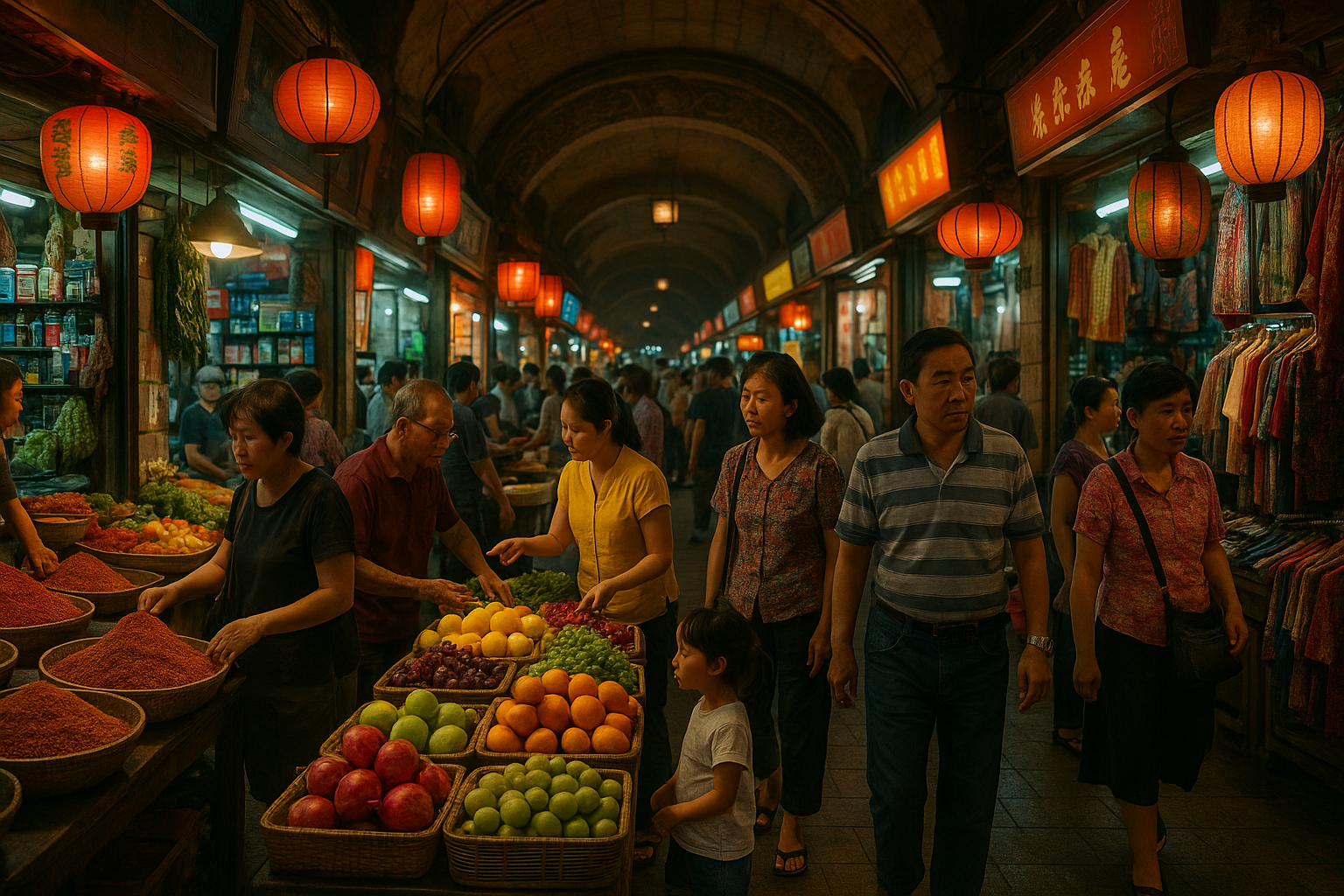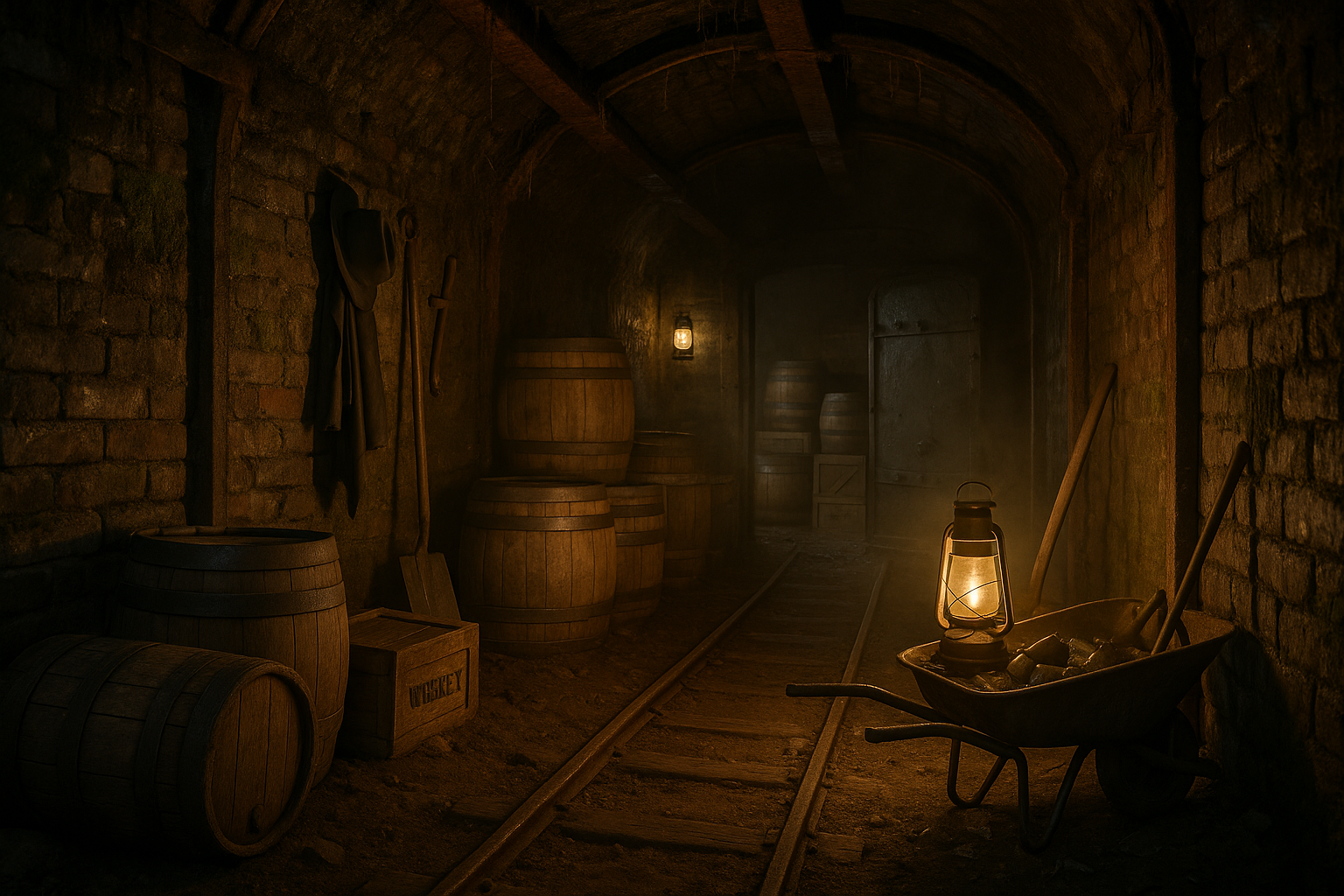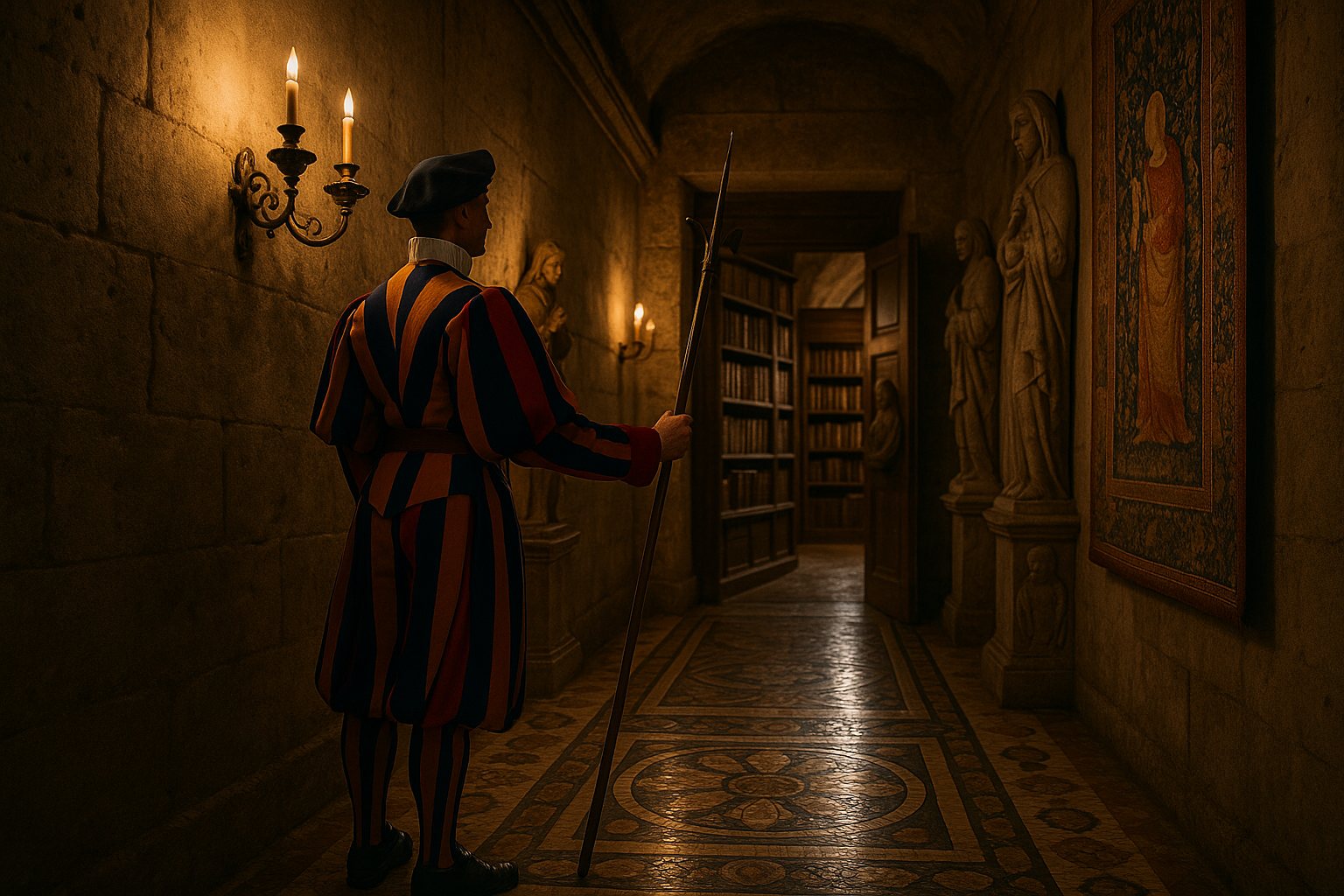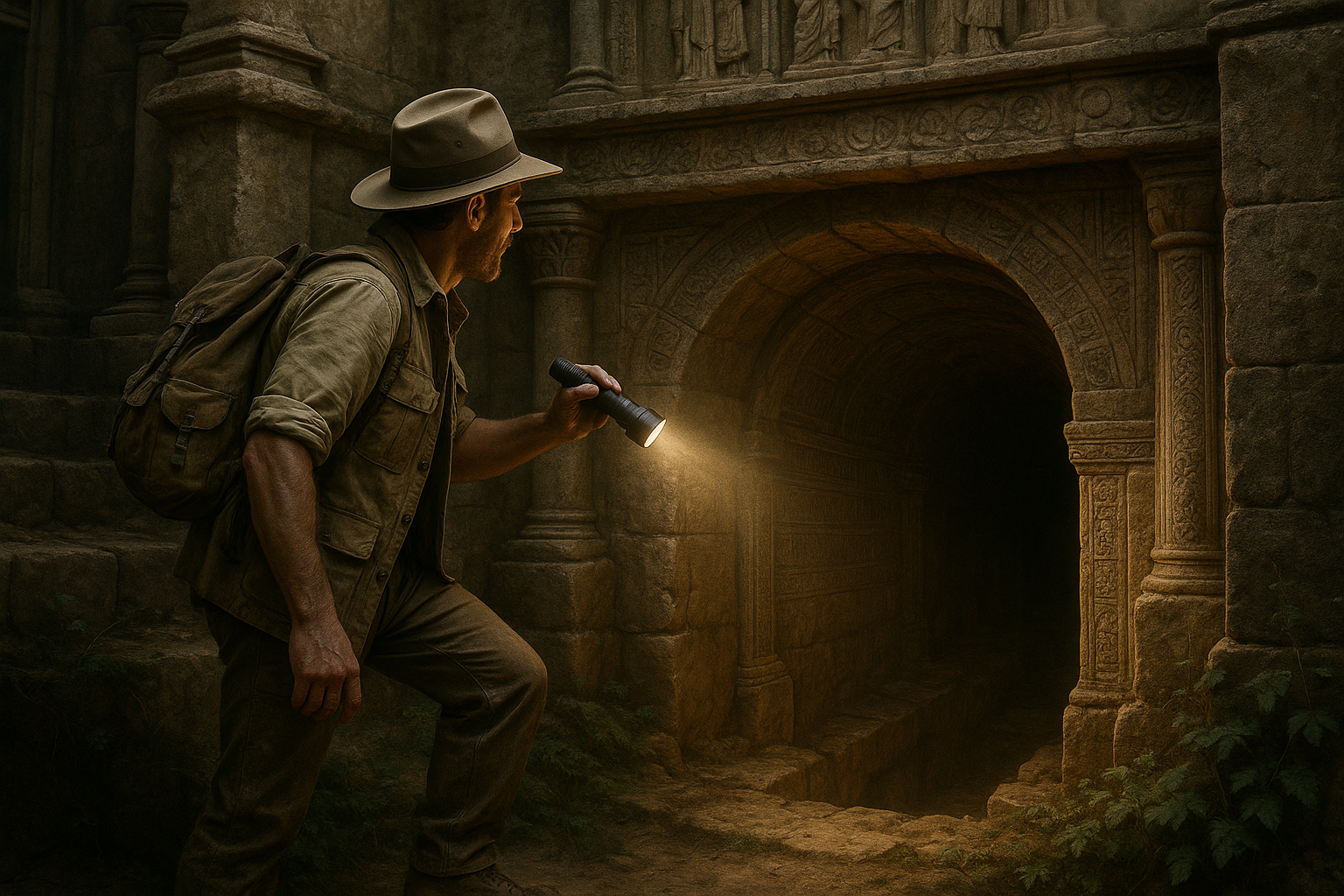In the hustle and bustle of city life, as we scurry through the daily grind, there’s a world beneath our feet that most of us never think twice about. Urban metro systems are marvels of engineering, transporting millions of people every day across sprawling metropolises. But these subterranean labyrinths hold more than just speeding trains and bustling commuters; they harbor secrets that weave together history, mystery, and a hint of adventure. Welcome to the hidden wonders of metro systems—an enigmatic world waiting to be explored by those who dare to look beyond the ordinary. 🏙️
Imagine stepping into the familiar clamor of a metro station, the sound of trains roaring through tunnels echoing in your ears, only to discover a secret passage leading to a forgotten part of the city’s history. It’s a tantalizing thought, isn’t it? Metro systems are often seen as utilitarian spaces, designed solely for efficiency and speed. Yet, beneath their surface lies a network of hidden corridors, abandoned stations, and concealed rooms, each with a story to tell. From clandestine Cold War bunkers to ghost stations frozen in time, these hidden passages invite us to explore the urban underworld with a sense of wonder and curiosity.
In this article, we’ll embark on a journey through the secret passages of urban metro systems around the world. Our exploration will begin with the historical context, uncovering how these clandestine spaces came into existence. We’ll delve into the stories of forgotten stations—some of which were left behind as cities expanded and modernized, while others were deliberately hidden from public view for strategic purposes. You’ll be intrigued by tales of metro stations that served as underground art galleries, wartime shelters, and even mushroom farms!
Next, we’ll shift our focus to the architectural marvels hidden beneath the surface. These secret passages are not just relics of the past; they are a testament to human ingenuity and the desire to make the most out of every available space. We’ll explore how architects and engineers have cleverly repurposed old tunnels and disused platforms, transforming them into vibrant cultural venues, secret dining spots, and artistic canvases that capture the spirit of the city above.
Finally, we’ll examine the impact of these hidden wonders on urban culture and community. In an age where cities are rapidly expanding and evolving, these secret spaces offer a unique connection to the past, bridging the gap between the historical and the contemporary. They inspire creativity, foster community engagement, and offer an escape from the mundane. By the end of our journey, you’ll have a newfound appreciation for the metro systems you thought you knew, and perhaps, a desire to uncover the hidden wonders beneath your own city streets.
So, grab your metro map, and let’s dive into the captivating world of secret passages in urban metro systems—a realm where history and mystery intertwine, offering a treasure trove of stories waiting to be discovered. 🌟
The Allure of Hidden Passages in Urban Metro Systems
In the bustling environment of modern cities, urban metro systems serve as the lifeblood of public transportation. However, beyond their primary function of facilitating daily commutes, these complex networks hold a fascinating secret: hidden passages. These concealed pathways often remain unknown to the general public, sparking curiosity and intrigue. In this article, we will delve into the world of these hidden wonders, exploring their historical significance, architectural marvels, and the thrilling adventures they promise for urban explorers.
Historical Significance of Hidden Passages
Hidden passages in metro systems often have historical roots dating back to the inception of the city’s transportation infrastructure. Many of these passages were constructed during times of war or civil unrest, serving as crucial escape routes or secret meeting points for government officials and resistance movements. For instance, during World War II, the London Underground’s hidden tunnels played a pivotal role in protecting citizens and facilitating strategic military operations. These secret passages are a testament to human ingenuity and resilience in times of crisis.
Exploring these historical hidden passages provides a unique glimpse into the past, offering insights into the city’s architectural evolution and the socio-political climate of the time. These tunnels often feature remnants of wartime architecture, such as reinforced walls, hidden chambers, and intriguing artifacts. As urban explorers venture into these concealed corridors, they not only embark on an adventure but also become custodians of history, preserving stories that might otherwise be forgotten.
Moreover, the historical significance of these hidden passages extends beyond wartime narratives. In some cases, they were designed as part of grand architectural visions that were never fully realized. For instance, certain metro systems have abandoned sections originally intended for expansion, left untouched due to financial constraints or shifting urban priorities. These unfinished passages offer a tantalizing glimpse into what might have been, capturing the imagination of those who dare to explore them.
Architectural Marvels Beneath the Surface
Hidden passages in metro systems are not only historically significant but also architectural marvels in their own right. Beneath the surface, these tunnels showcase engineering feats and design elements that captivate the imagination. The intricate lattice of tunnels, often designed with precision and attention to detail, reveals a world of craftsmanship that lies beneath the bustling city streets.
One of the most captivating aspects of these hidden passages is their diverse architectural styles. From ornate Art Deco designs to minimalist modernist structures, each passage tells a unique story through its architectural elements. The play of light and shadow in these subterranean spaces creates an atmosphere of mystery and wonder, enticing explorers to venture deeper into the unknown.
Additionally, the acoustic properties of these passages add another layer of intrigue. The echoes that reverberate through the tunnels create an otherworldly ambiance, enhancing the sense of adventure for those who explore them. The combination of architectural beauty and sensory experience makes hidden passages a favorite destination for urban explorers and photographers alike.
Adventures of Urban Explorers
For urban explorers, hidden passages in metro systems offer a thrilling adventure like no other. The allure of the unknown and the promise of discovery drive these intrepid adventurers to seek out and document these concealed spaces. Equipped with flashlights, cameras, and a sense of curiosity, urban explorers navigate the labyrinthine tunnels, uncovering secrets that lie beneath the city.
Exploring these hidden passages requires a combination of skill, knowledge, and respect for the environment. Urban explorers often rely on maps, historical documents, and local legends to locate these concealed entrances. Once inside, they carefully document their findings, capturing photographs and videos that provide a glimpse into this hidden world. It’s a delicate balance between adventure and preservation, as explorers strive to leave no trace while uncovering the mysteries of the underground.
The community of urban explorers is tightly knit, sharing information and experiences through online forums and social media platforms. They often collaborate on expeditions, pooling resources and expertise to access and document hidden passages. This camaraderie fosters a sense of shared discovery, as each exploration adds to the collective knowledge of these secret spaces.
Comparison of Hidden Passages Across Metro Systems
While hidden passages can be found in metro systems worldwide, each city boasts unique features and stories. The table below provides a comparative overview of hidden passages in various metro systems, highlighting their distinct characteristics and historical significance. 📊
| Metro System | Key Feature | Historical Significance |
|---|---|---|
| London Underground | World War II bunkers | Served as shelters during air raids |
| Paris Métro | Catacombs and abandoned stations | Used for secret meetings during French Resistance |
| New York City Subway | Ghost stations | Unfinished expansion projects from the early 20th century |
| Moscow Metro | Secret government tunnels | Cold War era shelters and command centers |
As you can see from the table, each metro system’s hidden passages have their own unique charm and historical context. For instance, the ghost stations of the New York City Subway tell tales of ambitious expansion plans that were never completed, offering a window into the city’s evolving transportation needs. In contrast, the Moscow Metro’s secret tunnels highlight the geopolitical tensions of the Cold War era, providing a glimpse into the covert operations of the time.
Safety and Ethical Considerations
While the exploration of hidden passages is undoubtedly exhilarating, it is crucial to approach these adventures with safety and ethical considerations in mind. Urban explorers must prioritize personal safety and adhere to legal regulations when accessing restricted areas. Trespassing in unauthorized areas can lead to legal repercussions and pose significant risks to personal safety.
Additionally, respecting the historical and cultural significance of these spaces is paramount. Urban explorers should strive to leave no trace, ensuring that these hidden passages remain preserved for future generations. Documenting and sharing discoveries responsibly can contribute to the appreciation and conservation of these underground wonders.
As urban explorers navigate the complexities of hidden passages, they must also consider the impact of their activities on the local community and environment. Building relationships with local authorities and communities can foster mutual understanding and support for the preservation of these hidden gems. By collaborating with historians, architects, and conservationists, urban explorers can play a vital role in safeguarding these unique aspects of urban heritage.
Further Exploration and Resources
For those intrigued by the allure of hidden passages in metro systems, there are numerous resources available to delve deeper into this fascinating world. Books, documentaries, and online platforms provide a wealth of information on the history, architecture, and exploration of these concealed spaces. Additionally, guided tours and events organized by urban exploration groups offer firsthand experiences for those eager to embark on their own adventures.
For a visual journey into the hidden wonders of urban metro systems, check out this captivating video: “Exploring Abandoned Tunnels: A Journey into the Unknown” by Urban Adventures. This video takes you on a thrilling exploration of abandoned tunnels, showcasing the beauty and mystery of these hidden passages. 🎥
By immersing yourself in the world of hidden passages, you not only satisfy your curiosity but also contribute to the appreciation and preservation of these underground treasures. Whether through reading, watching, or embarking on your own explorations, the hidden wonders of urban metro systems await those who dare to uncover their secrets.
- Explore historical documents and maps to uncover hidden entrances.
- Join urban exploration groups for guided tours and shared adventures.
- Engage with local communities and authorities to support preservation efforts.
- Document discoveries responsibly, ensuring the preservation of hidden passages.
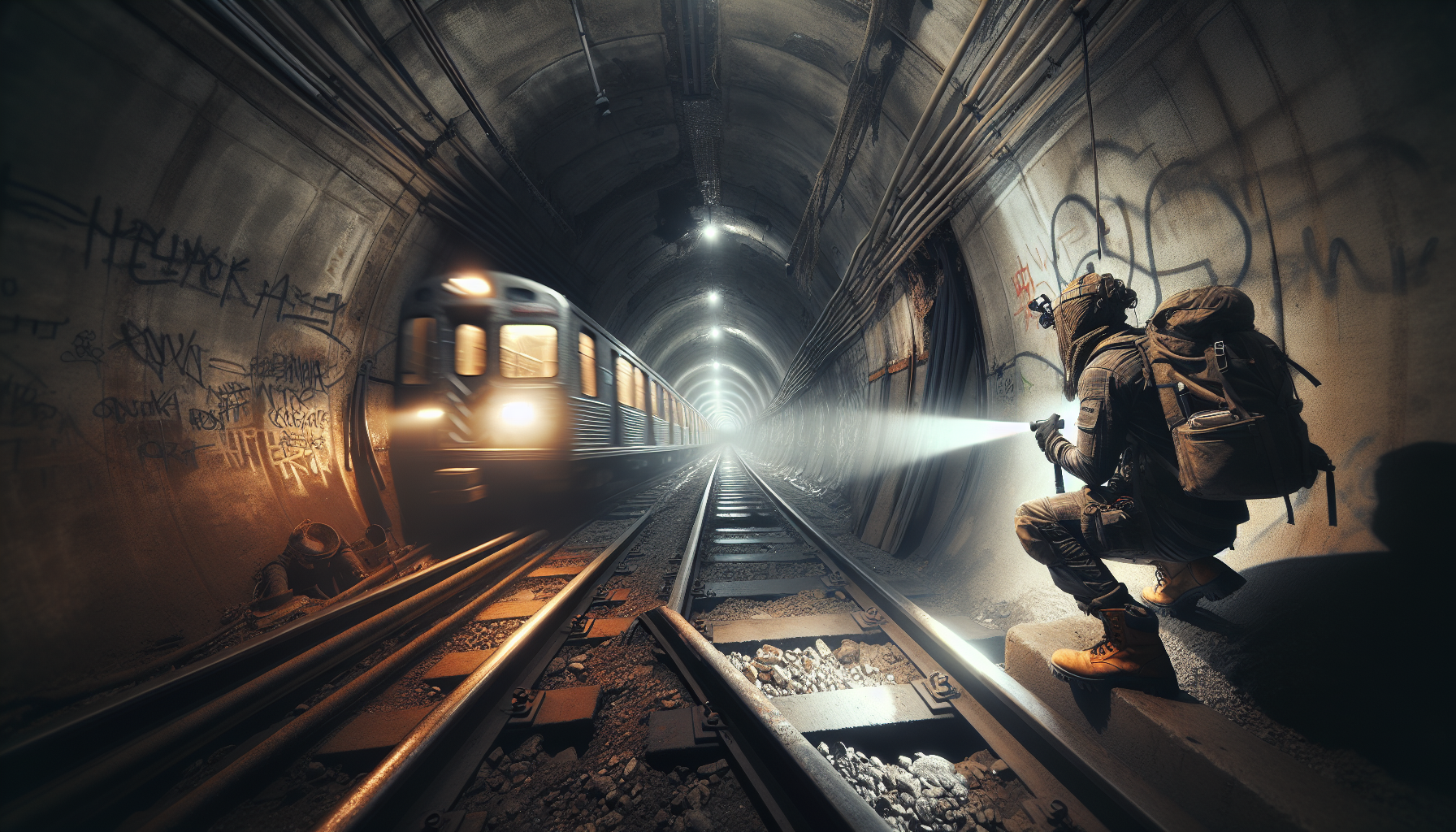
Conclusion
**Conclusion: Uncover the Hidden Wonders: Exploring Secret Passages in Urban Metro Systems**
As we conclude our journey through the intricate and often mysterious world of urban metro systems, it’s clear that these subterranean networks are not just about transportation. They are a fascinating amalgam of history, engineering marvels, cultural narratives, and hidden secrets waiting to be discovered. Throughout this article, we’ve delved into various aspects that make metro systems a subject of intrigue and wonder.
First and foremost, we explored the historical significance of metro systems, highlighting how they have evolved from simple underground railways to complex networks that serve millions daily. From the iconic London Underground to the sprawling New York City Subway, these systems are living testaments to human innovation and resilience. They have not only transformed urban landscapes but have also played a pivotal role in shaping the economic and social fabric of cities. 🏙️
We then navigated through the engineering feats behind the construction of these underground labyrinths. The challenges of tunneling beneath bustling metropolises, navigating through dense infrastructure, and ensuring safety and reliability are nothing short of monumental. The ingenuity required to balance these elements while minimizing disruption to city life underscores the remarkable capabilities of modern engineering.
Our exploration wouldn’t be complete without uncovering the hidden passages and secret routes that exist within these systems. Often overshadowed by their more functional purposes, these clandestine corridors hold stories of espionage, wartime strategies, and urban legends. They serve as reminders of the strategic importance metro systems have held throughout history, often operating as lifelines during times of crisis.
Additionally, we examined the cultural impact of metro systems, emphasizing how they serve as melting pots of diversity, bringing together people from all walks of life. Art installations, performances, and architectural designs transform these underground spaces into cultural hubs, reflecting the spirit and identity of the cities they serve. This vibrant interplay of culture and transportation highlights the metro system’s role as a dynamic social platform.
Finally, we discussed the future of metro systems, considering advancements in technology and sustainability. As cities continue to grow and environmental concerns become more pressing, the need for efficient and eco-friendly transportation solutions is paramount. Innovations such as automated trains, smart ticketing systems, and sustainable energy sources are paving the way for a new era of metro travel that prioritizes both convenience and environmental responsibility.
The importance of exploring and understanding metro systems extends beyond mere curiosity. These networks are vital to the functioning of urban centers, impacting daily commutes, economic activities, and environmental sustainability. By uncovering the hidden wonders of metro systems, we gain a deeper appreciation for the complexity and significance of these infrastructures.
As you reflect on the insights shared in this article, I encourage you to delve deeper into the metro systems in your own city or those you visit. Take the time to observe the architectural details, consider the historical contexts, and perhaps even seek out the hidden passages that lie beneath the surface. By doing so, you’ll not only enrich your understanding of these systems but also contribute to preserving and celebrating the rich tapestry of stories they embody.
Moreover, engaging with this topic provides an opportunity for dialogue and exchange of ideas. I invite you to share your thoughts, experiences, or any hidden gems you may have discovered in metro systems around the world. Your insights could inspire others to embark on their own explorations and contribute to a collective appreciation of these urban wonders.
In an era where connectivity is key, let’s harness the power of social media and online platforms to share our findings and stories. A simple post, comment, or share could ignite curiosity and encourage others to uncover the hidden wonders of metro systems. Let’s inspire a community of urban explorers eager to delve into the depths of these fascinating networks. 🌍
In closing, the exploration of secret passages in urban metro systems is not just an adventure beneath the surface; it’s a journey into the heart of what makes cities vibrant, resilient, and endlessly fascinating. As we continue to navigate the complexities of urban life, let us not forget the hidden wonders that lie just below our feet, waiting to be discovered.
For further reading and to deepen your understanding of urban metro systems, consider exploring resources from reputable sources such as the Transport for London and the New York Transit Museum. These platforms offer extensive information and insights into the history, operation, and future of metro systems.
Thank you for joining us on this underground adventure. May it inspire you to look at your city with fresh eyes and a newfound appreciation for the hidden wonders that await discovery. 🚇
Toni Santos is a visual storyteller and artisan whose work explores the quiet power of what lies beneath. With a deep fascination for subterranean and hidden architecture, Toni uncovers the layers, voids, and forgotten spaces that shape our built environment from the shadows.
His art is a journey through the unseen — from ancient underground chambers to sealed passageways, service tunnels, and foundations buried in time. Each creation tells a story of silence, secrecy, and structure — revealing how absence and concealment can be just as meaningful as what’s visible above ground.
Whether working through visual compositions, architectural studies, or symbolic handcrafted pieces, Toni captures the soul of hidden spaces. His work bridges art and archaeology, blending design with discovery. Trained in visual design and traditional techniques, Toni creates with intention. His pieces don’t just depict — they interpret, inviting viewers to rethink what space, memory, and architecture mean when they’re hidden from view.
As the creative force behind Vizevex, Toni shares this perspective through curated visual narratives, symbolic collections, and interpretive essays that give voice to the quiet geometries beneath our feet.
His work is a tribute to:
The mystery of spaces built to be forgotten
The symbolism embedded in foundations, voids, and passageways
The timeless connection between human intention and hidden structure
Whether you’re an artist, an urban explorer, or someone fascinated by the unseen frameworks that support our world, Toni invites you into a realm where architecture becomes myth — one corridor, one layer, one buried story at a time.


